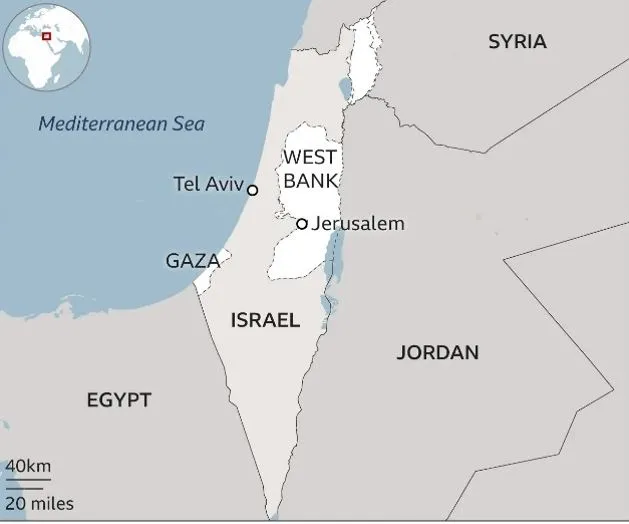

15th January 2025 (9 Topics)
Context
In a latest development, Hamas agreed to a draft ceasefire plan, which aims to end the conflict. However, it still requires final approval from the Israeli Cabinet. The plan was developed with the help of the US, Qatar, and Egypt.
Background of the Conflict:
- The ongoing conflict between Israel and Hamas started in October 2023, with Hamas launching attacks on Israel, resulting in over 1,200 Israeli casualties.
- In retaliation, Israel launched military operations in Gaza, leading to more than 64,000 Palestinian deaths, according to reports.
- The conflict between Israel and the Palestinian people is rooted in a complex history of territorial disputes, wars, and political struggles that date back over a century.
- key historical events and issues involved in the conflict:
- Creation of Israel (Pre-1948)
- Before 1948, the area known as Palestine was under British control following World War I and the defeat of the Ottoman Empire.
- Palestine had a Jewish minority and Arab majority, along with other ethnic groups.
- Tensions escalated after Britain supported the idea of establishing a "national home" for Jewish people in Palestine, particularly after World War II, when many Jews fled to the area due to the Holocaust.
- In 1947, the United Nations proposed a plan to divide Palestine into separate Jewish and Arab states. Jerusalem was to be an international city. The Jewish leaders accepted the plan, but the Arab states rejected it.
- In 1948, after British withdrawal, Jewish leaders declared the State of Israel. Israel was recognized by the UN in 1949.
- The 1948 Arab-Israeli War: Immediately after Israel’s declaration of independence, it was attacked by five Arab nations. This became known as the Arab-Israeli War of 1948. Israel survived and gained control over much of the territory, including parts of Jerusalem.
- The 1967 Six-Day War: In 1967, Israel fought Egypt, Syria, and Jordan in the Six-Day War. Israel launched a preemptive strike fearing attacks. By the end of the war, Israel had captured significant territories: Sinai Peninsula and Gaza from Egypt, Golan Heights from Syria, and West Bank and East Jerusalem from Jordan. This expanded Israeli control over areas that Palestinians view as part of their future state.
- The West Bank and Gaza
- The West Bank and Gaza Strip are considered Occupied Palestinian Territories. The West Bank is home to about 3 million Palestinians.
- Israel controls the West Bank but allows the Palestinian Authority to govern most towns and cities there. Israeli settlements in the West Bank are considered illegal under international law, but Israel disputes this.
- Gaza is controlled by Hamas, a Palestinian militant group that governs the area since 2007, after defeating the rival Palestinian faction Fatah in a civil war.
- Jerusalem: Both Israel and Palestinians claim Jerusalem as their capital. Israel controls the entire city, including East Jerusalem, which it captured in the 1967 war. Palestinians seek East Jerusalem as the capital of a future Palestinian state.
- Creation of Israel (Pre-1948)
What is the Draft Ceasefire Agreement?
- The draft ceasefire plan has three phases.
- Phase 1: Immediate Ceasefire and Hostage Release (6 weeks)
- A complete ceasefire will be implemented, halting all military operations.
- Israeli forces will withdraw from all populated areas of Gaza.
- 33 Israeli hostages, including women, the elderly, and the wounded, will be released by Hamas in exchange for hundreds of Palestinian prisoners held by Israel.
- Palestinian civilians will be allowed to return to their homes and neighborhoods, particularly in northern Gaza.
- Humanitarian aid will be provided, with 600 trucks delivering food and medical supplies daily.
- Phase 2: Further Hostage Exchange and Israeli Withdrawal
- In the second phase, Hamas will release the remaining living Israeli captives, mainly male soldiers.
- This release will be in exchange for more Palestinian prisoners.
- The full withdrawal of Israeli forces from Gaza will take place.
- Details of this phase will be negotiated during the first phase.
- Phase 3: Gaza Reconstruction and Final Hostage Return
- A major reconstruction plan for Gaza will begin.
- Any remaining deceased hostages will be returned to their families.
Why This Matters?
- The conflict has caused immense destruction and loss of life, particularly in Gaza.
- The ceasefire deal represents a potential turning point in the conflict but remains uncertain due to political disagreements within Israel.
- The deal is expected to halt the most deadly and destructive war between Israel and Hamas.
- It would bring respite to the Gaza Strip, where 90% of the population of 2.3 million have been displaced during nearly a year and a half of war and many are at risk of famine.
- The involvement of global actors like the US, Qatar, and Egypt shows the international significance of the issue.
Fact Box:Hamas
Gaza Strip
|
More Articles


